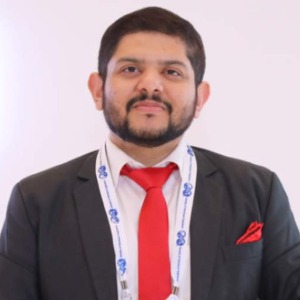Title : Evolution of zonal isolation completion technologies from simple to smart
Abstract:
Zonal isolation seeks to segregate undesirable intervals by preventing the fluids such as water, oil or gas in one zone from mixing with fluids from another zone. It creates the necessary compartmentalization to allow flow control devices to control the zones independently or commingled for optimal inflow performance of the reservoir. This is typically done through the deployment of efficient and robust completion zonal isolation technologies. This paper reviews the chronological advancements in the evolution of zonal isolation completion technologies from past to present. Insights into future developments are presented highlighting the challenges and opportunities that are shaping new advancements.
A classification of the design families and critical design considerations thereof are presented with a focus on matching optimum tool design criteria to the well completion requirements such as open-hole/ cased-hole, and well environmental conditions. The best practices and lessons learnt are derived from a combination of literature review, subject matter expert input, and the authors' own experience in the industry. Completion zonal isolation tool systems such as Packers, Seal Assemblies, and Bridge plugs are reviewed with emphasis on the most recent advancements such as wireless technologies and novel barrier materials. An evaluation of their merits and demerits is presented via an application weighted summary matrix.
The design and selection of zonal isolation technologies directly determine the well integrity and production success. The main role of the described tool systems is to act as well barriers by enabling anchoring and sealing functions. Therefore, the ultimate target should be for system reliability, and safety of equipment, especially with any increased technical complexity. Zonal isolation technology has been around for a long time and field-proven technologies are still preferred. This makes it difficult to accept unproven, novel technology concepts. However simple and creative advanced system designs with easy operational scheme are currently being developed and deployed. Rigorous qualification to benchmark industry standards such as the American Petroleum Institute (API) and Advanced Well Equipment Standards (AWES), provide design assurance and quality requirements for new technology designs through standardized verification and validation criteria.
Advanced zonal isolation technologies promise new completion design strategies previously not possible. The plethora of system designs from past to present needs to be classified into simple families including the advanced hybrid designs. This paper presents the pros and cons of existing and emerging integrated zonal isolation systems from a reliability and complexity perspective, and categorizes them through a succinct summary matrix. The analysis will guide production and reservoir professionals through quick reference selection criteria.
Audience Takeaway:
- A curated technology selection matrix will help production and reservoir professionals in technology fit analysis for specific wells.
- Understand a risk weighted adoption of new technologies for critical zonal isolation applications.
- A deeper appreciation of the challenges of Open Hole zonal isolation for water shutoff.
- The technical necessities that drove the evolution of the zonal isolation technologies.



